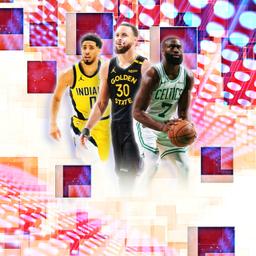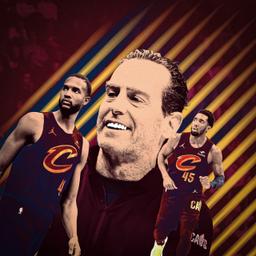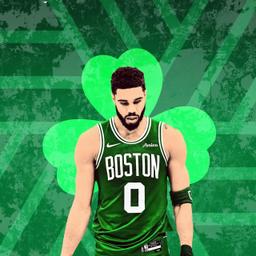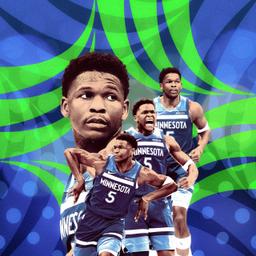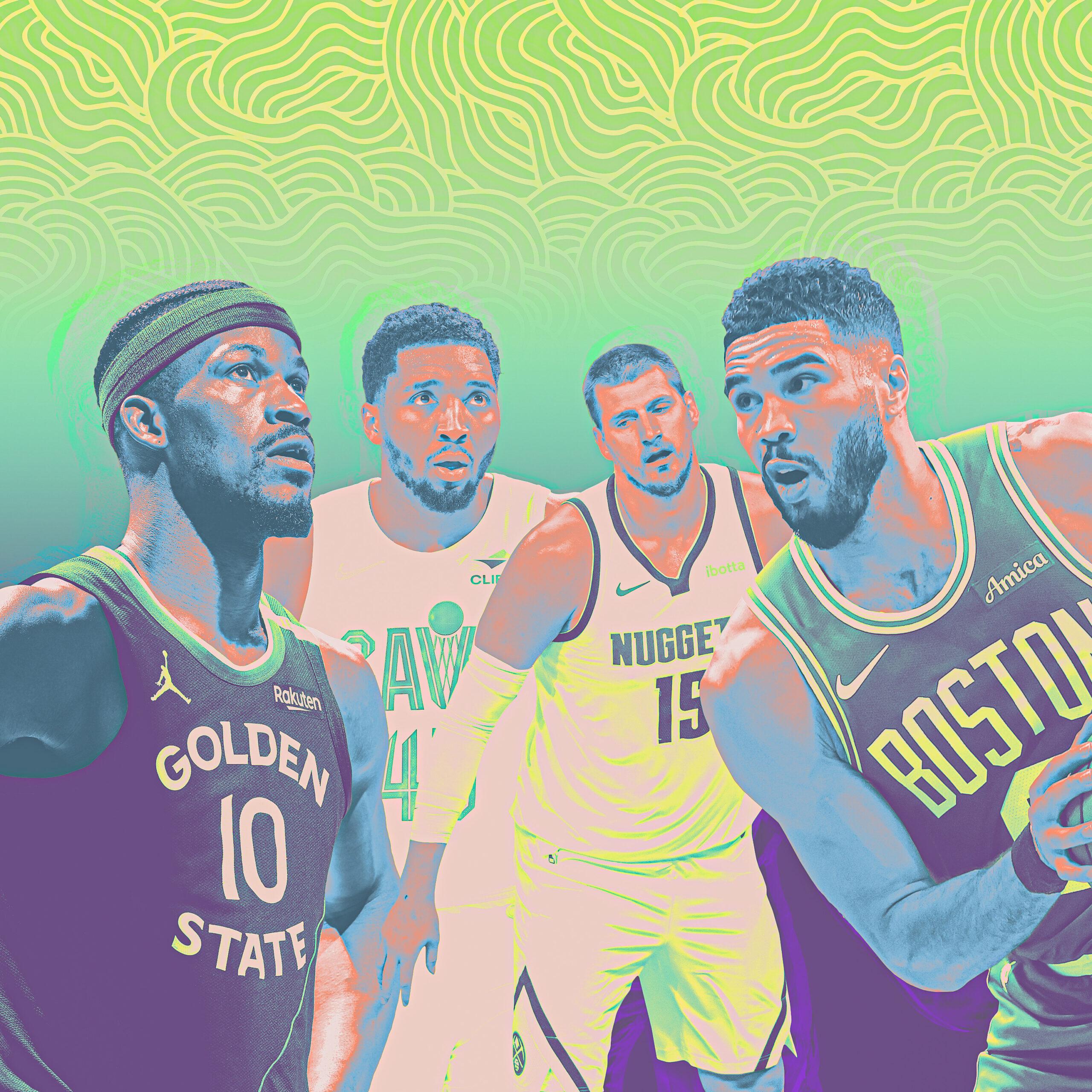
Six road wins. Two 20-point comeback victories in the span of 24 hours—an unprecedented stack of infinitesimal odds. Eighty-seven points scored in a half. The 2025 NBA playoffs’ conference semifinal round has delivered just about everything: narrative-altering collapses, legend-building superstar moments, and a series-shifting injury to one of the most influential players in basketball history, casting doubt upon both the present and future. It’s high drama, but, as far as we can tell, Karl-Anthony, there is no script here. And if there is, it must have come from a divine basketball order. But there is plenty to mull over as the dust settles after two games apiece across the slate. With each series heading into Game 3, here are a few questions our staff is considering.
Are the Boston Celtics cooked?
Danny Chau: Losing two games that were well in hand in brutally similar ways—these are the kinds of crises of confidence that tell you about a team. There is plenty of blame to go around for how the Celtics have fumbled their second-round series with the Knicks thus far, but it’s hard not to square the focus on Jayson Tatum. One made field goal in the two fourth quarters played, 0-for-9 from 3. A confounding lack of stage presence from one of the game’s best players, from a defending champion.
I’d argue that superstars are who they are because of their self-possession: a deep sense of themselves that manifests as on-court style. Self-possessed isn’t the word I’d use for Tatum in this series. The word that comes to mind is susceptible—someone capable of being influenced and misdirected. After Boston was shamed for setting a new postseason record for missed 3s in Game 1, Tatum cut his long-range attempts from 15 in Game 1 to five in Game 2. He nearly doubled his midrange attempts; he tried toying with mismatches because that’s what a player of his mold is supposed to do. Same difference. Tatum’s struggles have been emblematic of what’s felled the Celtics in two stunning losses: a lack of focus, a lack of rhythm, a literal waste of time.
One of the central tensions of this topsy-turvy second round has been the clash between following deeply ingrained principles and adapting to the moment. Oklahoma City, for instance, felt that tension come to a head in Game 1. Boston has missed a ton of 3s, the most in any two-game stretch in NBA playoff history. Prioritizing shots from behind the arc will always be the bedrock of the team’s offense, and when it all aligns, it’s obviously a championship-winning formula. But there is perhaps a misguided belief that the team can, at any point, manifest last year’s circumstances into the present. In 2024, the Celtics destroyed teams with one of the most efficient 3-point shooting seasons in league history; they aren’t that squad anymore, as teamwide regression has brought them closer to league average than their historic accuracy last year. The Celtics are down bad because they aren’t hitting their 3s, yes, but they’re also losing the scoring battle in the paint.
It’s an uphill battle they face, but the Celtics know 0-2 isn’t a death knell; Boston forced a Game 7 after going down 0-3 against the Miami Heat two seasons ago. The team is too talented and can now boast championship bona fides, though perhaps not mettle. Arguably the most difficult series in the Celtics’ run last season came against the Indiana Pacers, who were swept by Boston after Tyrese Haliburton’s untimely hamstring strain in Game 2. The Celtics have already lost as many games in these playoffs as they did in their entire championship run last season.
Credit to Jalen Brunson for holding his own on switches and trusting the help. Credit to the Knicks as a whole for staying resilient in ways they haven’t exhibited in years. The margins are so thin that one could still envision Boston taking the series, given its league-best road record. But Madison Square Garden will rattle with an alien energy for Game 3—the Celtics will be enveloped by the roar of a starved fan base that smells blood in the water. The Celtics aren’t cooked yet, but you always have to consider how the internal temperature continues to rise from residual heat.
Can the Golden State Warriors actually win without Steph?
Logan Murdock: The simple answer is … probably not.
Thursday night showed a few reasons why. With Curry on the bench recovering from a hamstring strain suffered in the opener, the Warriors offense was rudderless, slow, and unable to function, held scoreless through the first five minutes of Game 2. Draymond Green, who turned in a vintage performance in Game 1, earned yet another technical on Thursday night (his fifth in nine games). Meanwhile, Jimmy Butler failed to re-create the magic that led to a Game 1 upset, making just 6 of his 13 shot attempts. Even Buddy “Robin” Hield seemed to leave his cape at the hotel.
The Warriors offense has always taken a dip when Curry is off the floor, but it's never been this dire. Historically, the Warriors have been largely successful without Curry during the postseason. In the 2016 playoffs, he missed four games after injuring his knee in the first-round matchup against the Rockets, and the Warriors went 3-1 without him. A few years later, they signed Kevin Durant, who could offset any offensive absence from Curry.
This year’s roster isn’t as gifted as some of the teams during Golden State’s dynastic run. And though the Warriors defense is putting up a solid fight against Minnesota, you can start Draymond at the 5 for only so long. Butler has looked beaten up, playing with injuries that would probably make him sit out if this were the regular season. And the rest of the supporting cast looks ill-equipped to pick up the slack.
The sad reality is that the Warriors are living out what life will be once the 37-year-old Curry inevitably retires—whenever that is. It will be hard, it will test the fabric of the organization, and as the team is learning, success won’t come easily.
What X factor will swing Nuggets-Thunder?
Michael Pina: Through the first two games of a series that’s somehow tied, the Oklahoma City Thunder have attempted seven more shots than the Denver Nuggets despite grabbing 13 fewer offensive rebounds. How? Turnovers. Herein lies one of the most important (if not the most important) and telling statistics over the rest of the series. It’s critical.
Denver’s turnover rate in this series is a whopping 18.6 percent, which would rank a few percentage points above the 30th-ranked, spilled-milk mayhem we saw in Utah during the regular season. Some of this was to be expected. The ability to wreak defensive havoc is what makes the Thunder so dangerous. They dart in and out of passing lanes, disguise coverages, pressure the ball with an intensity that can’t be replicated by any other team, and wall off the paint.
But the Nuggets can’t lose the possession game against this team and expect to win. If they continue to be this loose with the ball, they may not even be competitive. What’s particularly concerning over the first two games is how mistake-prone Denver has been with Nikola Jokic on the court. During the regular season, the Nuggets’ turnover rate was 12.8 percent, a top-three mark. In this series, with Jokic in the game, it’s 18.4 percent. That’s … not gonna cut it.
The good news for Denver is it’s hard to confuse the world’s best player multiple games in a row. He’ll find ways to attack, get a better sense of when and from where double-teams are coming, and calm his offense down. Even if Jokic’s teammates miss the open shots he gets them, the potential for an offensive rebound alone makes that result a much better alternative than a flurry of live-ball turnovers that virtually guarantee two or three points the other way.
Are the Cleveland Cavaliers 64-win frauds or just hurt?
Isaac Levy-Rubinett: Damn. That’s a brutal question. Let’s start by reviewing the Cavs’ injuries: Darius Garland hasn’t played since Game 2 of the first round because of a toe injury, and Evan Mobley and De’Andre Hunter missed Game 2 against the Pacers due to injuries suffered during the fourth quarter of Game 1. That means Cleveland was missing one starter in its first loss and two starters (the point guard and the Defensive Player of the Year, no less) and a key reserve in its second. For what it’s worth, the Game 3 prognosis for all three players ranges from “There is optimism” to “We’re hoping for the best.” So that’s a deep hole for any team to climb out of, and I’m not ready to declare the Cavs frauds. I think the answer to this question lies somewhere closer to “just hurt.”
But … the Cavs are absolutely on fraud watch. This team profiles as a championship contender. It just won 64 games, posted the best offense in the NBA, and tallied two distinct 15-game winning streaks, aided in large part, it should be noted, by superior depth. The Cavs are specifically designed to withstand these sorts of absences; when Garland and Mobley go out, Donovan Mitchell and Jarrett Allen are ready to come in. Even in a banged-up state, the Cavs have the depth, size, and offensive firepower to beat the Pacers—and to their credit, for most of Game 2, they did. Until a complete and total meltdown (though not the worst of the week!) brought this somewhat disrespectful question to the fore.
I’ll admit that I came into the playoffs with some healthy skepticism about the Cavs’ formula. Their core four players deserve a ton of credit for bending their games to accommodate one another, but I have trouble believing in a championship ceiling for a roster that falls back on the ability to stagger its best players rather than maximize them. In this respect, the Cavs are a fascinating test case for team-building in the second-apron era, with these playoffs serving as a referendum of sorts on their model. So, down 0-2 heading back to Indiana, are the Cavs frauds, or are they just hurt? My real worry is that they might be both, but the injuries will make it impossible to know.

